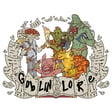
Episode 140: Breakfast with the Color Pie
Hello, Podwalkers, and welcome back to another episode of the Goblin Lore Podcast! And we are back with our 7th Episode Using The Color Pie to discuss one of our top 3 Topics (Food). With each episode we find ourselves refining our Color Pie Theory for Food/Cooking and today's episode will continue that "refinement". Today we take on the American Breakfast... This stemmed from a discussion of excess and Hobbes's belief that every food would basically include Black. Let us know what you think. Also Hobbes would like to apologize for the audio. Something was causing interference with his mic (which appears to be fixed) but this had already been recorded. We hope it does not detract too much...
We also are proud to have partnered with Grinding Coffee Co a black, LGBT+ affiliated and owned, coffee business that is aimed at providing coffee to gamers. You can read more about their mission here. You can use our partner code for discounted coffee!
On another new note we continue our partnership with The Fireside Alliance. From their main page: "An independent media network and a progressive community of progressive communities". Please check them out!
Again we would like to state that Black Lives Matter (with a link to where you can offer support both monetary and not).
____________________________________________
As promised, we plan to keep these Mental Health Links available moving forward too. For general Mental Health the National Alliance on Mental Illness (NAMI) has great resources for people struggling with mental health concerns as well as their families. We also want to draw attention to this article on stigma from NAMI's site.
If you’re thinking about suicide or just need someone to talk to right now, you can get support from any of the resources below.
- National Suicide Prevention Lifeline: 1-800-273-TALK (8255)
- Veteran's can Press 1 at anytime to be taken to the Veteran's Line
- Crisis Text Line: Text HOME to 741-741
- International suicide hotlines: A comprehensive resource list for people outside the US.
- IMAlive: Click Chat Now to access a live online network of volunteers through instant messaging.
- TrevorLifeline, TrevorChat, and TrevorText (LGBTQ+ crisis support): 1-866-488-7386, or text “Trevor” to 1-202-304-1200
- Trans Lifeline (US): (877) 565-8860
____________________________________________
You can find the hosts on Twitter: Hobbes Q. at @HobbesQ, and Alex Newman at @Mel_Chronicler. Send questions, comments, thoughts, hopes, and dreams to @GoblinLorePod on Twitter or GoblinLorePodcast@gmail.com.
Opening and closing music by Wintergatan (@wintergatan). Logo art by Steven Raffael (@SteveRaffle).
Goblin Lore is proud to be presented by Hipsters of the Coast, and a part of their growing Vorth

